I often see confusion about whether knitters need sock blockers to finish their projects. The answer, as with so many things, is really that it depends.
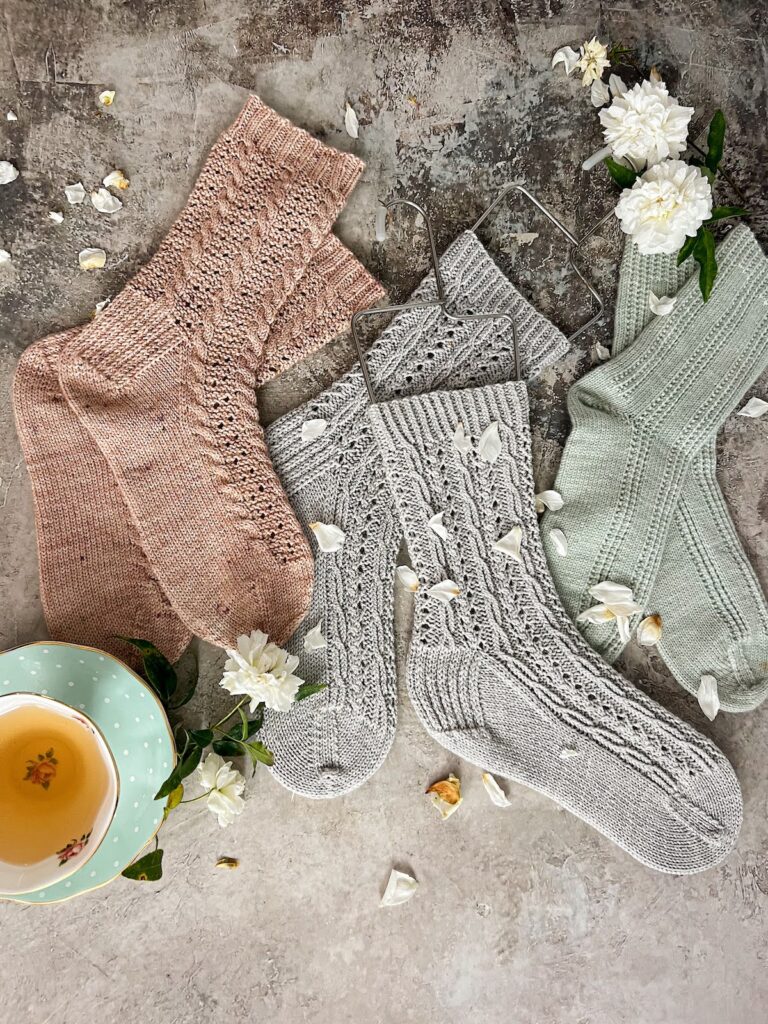
More specifically, it depends on your goals for your socks and why you are making them.
Let’s take a look at some reasons sock blockers might be helpful, reasons they might be overkill, and some data about the knitters who do and don’t use them.
First: let’s clear something up about blocking
I polled my Instagram audience about whether they use sock blockers or not, and I got some pretty interesting results. I will share numbers later in this post.
What really struck me, though, and what I think we need to address before we get into the meat of this post, was the reason several people said they don’t block their socks. It’s because their feet are their sock blockers.
I think some of this is reasonable confusion created by the existence of sock blockers themselves. But what’s important to know here is that the sock blocker is mostly irrelevant to whether your sock has been blocked or not.
Blocking has less to do with stretching something into shape and more to do with giving it a good soak in lukewarm water or steam. This is so that the stitches can open up and the yarn can bloom. Then you gently squeeze out the water, if needed, and lay the sock flat to dry.
I strongly recommend doing this with your knits regardless of whether you are using sock blockers or not. (For more on which sock yarns I think are best for this process and other scenarios, don’t miss my top 5 sock yarn recommendations.)
Of course, I didn’t own sock blockers for my first 10 years of knitting. In fact, I wrote a whole blog post about how to block socks without special tools. I only bought blockers once I started designing and realized that some of my designs didn’t show up well unless I somehow spread out the stitches for the viewer. But I always made sure to soak my socks and lay them flat to dry.
I talk a little bit more about why this matters so much in this blog post about why I always block my socks.
Okay. Now that we’ve cleared that up, let’s talk about why you might want to use sock blockers and why they might be unnecessary for you.
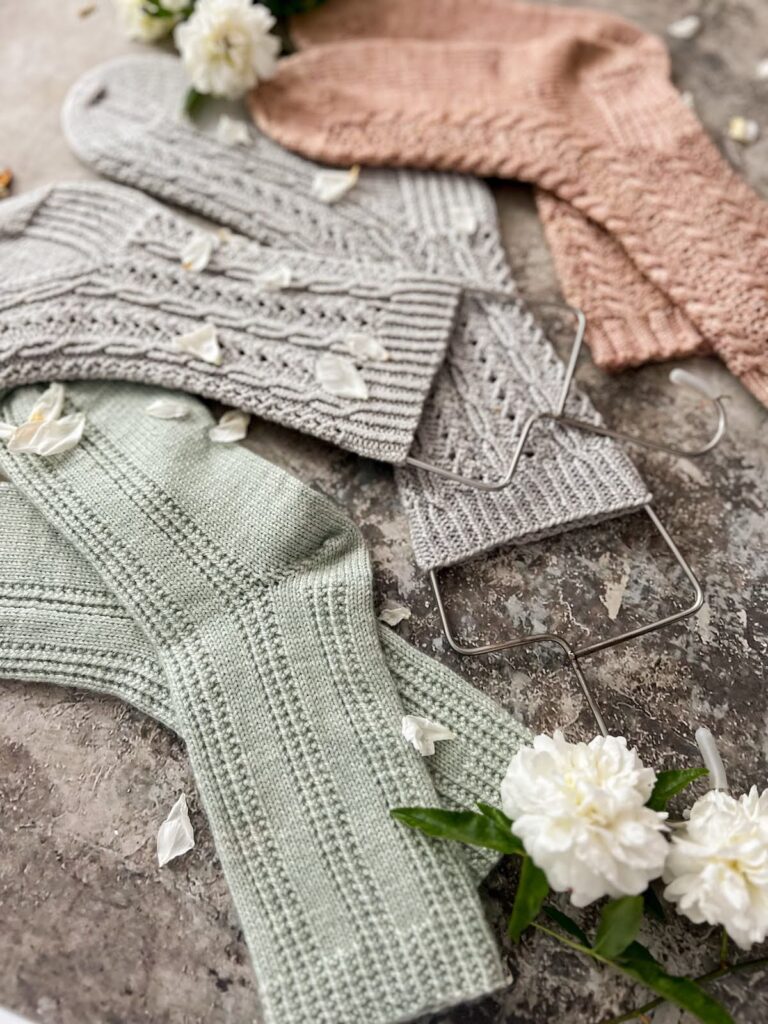
In favor: sock blockers make for better photos
One of the primary reasons you might choose to use sock blockers is that they really do make for a better photo of your finished socks.
If you are designing socks, photographing socks for publication, or otherwise trying to make a living off of the pictures of the socks, you’ll want to present them in their best light. Sock blockers are the perfect tool to achieve that result.
They make the finished sock really crisp and sleek looking. A sock dried on a sock blocker is kind of like a dress shirt that has been ironed. You’ll see every little detail has been sorted into place and nothing is rumpled anymore.
Hand-knit socks dried on a sock blocker have a more professional look. That can translate into more product or pattern sales.
Against: some sock blockers might stretch your socks too much
I heard from a few people that they found the sock blockers they tried stretched their socks too much. This is definitely a risk. It’s born out of the same reason that makes so many off-the-rack clothes ill-fitting.
Most sock blockers are designed in just a few different sizes but are intended to cover lots of different feet. For example, mine are meant for for socks that fit feet in US women’s shoe size 7 to 9. That’s a real range of sizes. If you were on the smaller end of that range, you might find that the sock blocker is too big for your needs.
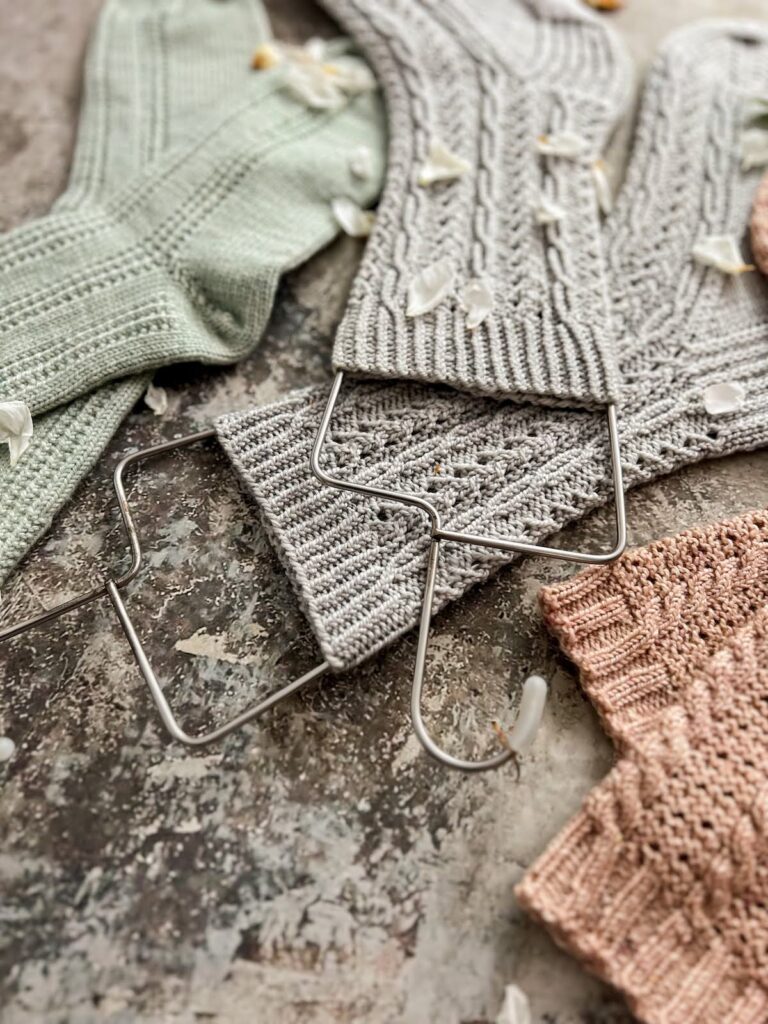
The shape of the sock blocker might also not be suited to your feet. One friend mentioned to me that her sock blockers were fine in the feet but they stretched out the ankles too much. The stretched ankles made her socks sag. I had that same problem with my sock blockers when I first bought them.
Thankfully, although they’re stainless steel sock blockers and therefore pretty sturdy, my sock blockers are still flexible. I was able to bend the ankles into a shape that works better for me. If you’re using sock blockers made out of laser-cut wood or plastic, you will not be able to make those kinds of adjustments to customize the shape of your sock blockers.
You might be able to avoid some of this problem if you use adjustable sock blockers. These types of blockers have a foot that can be extended or shortened to match the length of your foot. Adjustable blockers, however, won’t be as helpful if it’s the shape of the ankle that doesn’t work for you.
In favor: sock blockers help socks hold their shape
If you’re like me and really enjoy storing your socks in neatly folded little piles, you might appreciate the lasting effect of sock blockers. I find my socks dry more evenly and flatly if I use sock blockers for the first washing and drying. This is true even after they’ve been worn and washed again.
That’s because the wet blocking process helps lock in the shape for hand knit socks made from animal fibers.
Take a look at the socks in this post. They’re all neat and tidy. I’ve worn and rewashed all of these socks without using sock blockers after the first time. They hold their shape better because I put them on sock blockers the first time I washed them.
Against: sometimes, it’s enough just to soak and lay flat to dry
If you aren’t photographing your makes or trying to make a living from your sock designs, you may not need to worry about making sure your socks are perfectly flat if you don’t want them to be.
I heard from several friends who said they use sock blockers for socks they plan to give as gifts. Socks for themselves or their family members, though, don’t go onto the sock blockers.
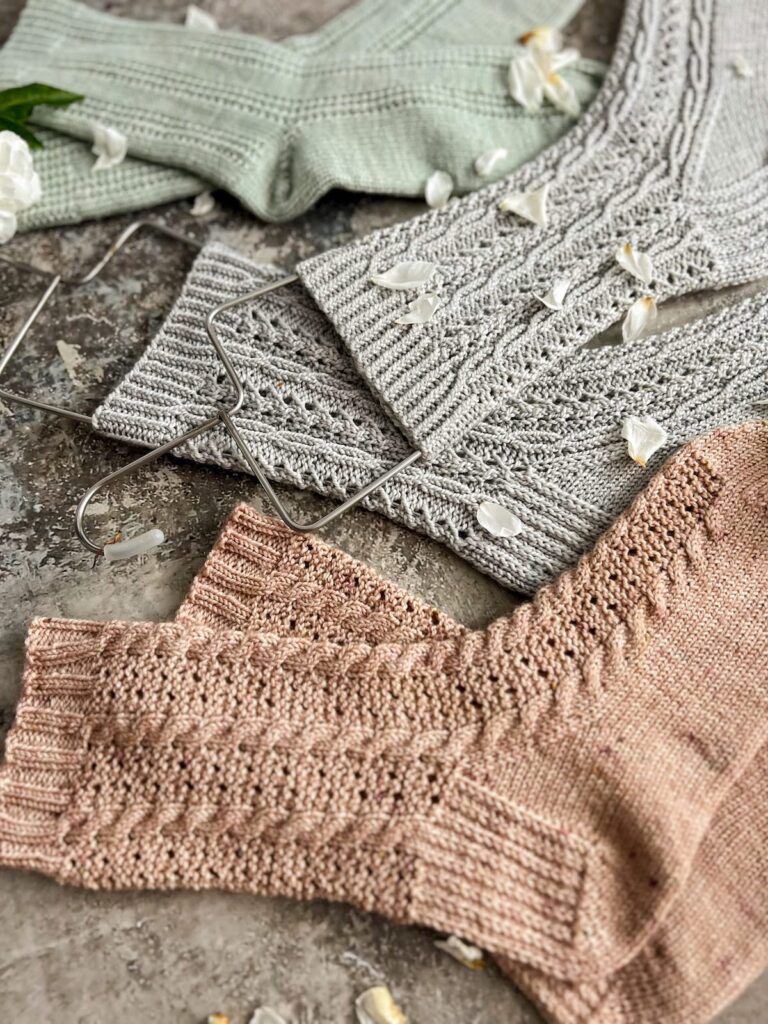
That makes sense to me! If presentation isn’t important for whatever reason, why spend the energy on it? It’s a finite resource. You could use that time for knitting more socks.
In favor: sock blockers open out textural details
If you are working on socks with lots of texture, sock blockers can help make those details more even visible. This is especially helpful when you are working with socks with lace details on them, like many of my designs.
A stitch pattern that is complex will generally benefit from a good blocking. When you take the wet sock and shape it on sock blockers, the shape of the blockers will help open out the stitches and let them dry in place.
Against: sock blockers are an added expense and need to be stored somewhere
Sock blockers also cost money. There’s no getting around that. Even the less expensive ones are still about $20 USD. If you are buying nice wooden blockers from a small maker, your price is going to be higher, while blockers made from acrylic material tend to be on the less expensive end of the spectrum.
It’s reasonable to decide this is not a necessary expense and put your resources elsewhere. Like more yarn. I’m always in favor of decisions that allow me to add more yarn to the collection.
Sock blockers also need to be stored somewhere. If you live in a small home or are pressed for storage, or if you just try to keep a more minimalist lifestyle, having yet another thing to store for your hobby can be a bit of an annoyance.
That’s especially so for something like sock blockers. Sock blockers are kind of large, oddly shaped, and can’t be folded up. I end up shoving mine into cupboards and in between books. That means I also tend to lose them for stretches of time. Whoops.
In favor: socks on blockers can dry more quickly
Although socks can be laid flat to dry without any special tools whatsoever, sock blockers can help achieve quicker air-drying times. That’s because many of them have a handy hook or hanging hole at the top of the leg portion. You can slide the wet sock onto the blocker, hang it up to dry for better air flow, and get a dry sock in less time.
Faster drying can be especially important if you live somewhere with a lot of humidity in the air, because you don’t want your wet socks to get musty or moldy.
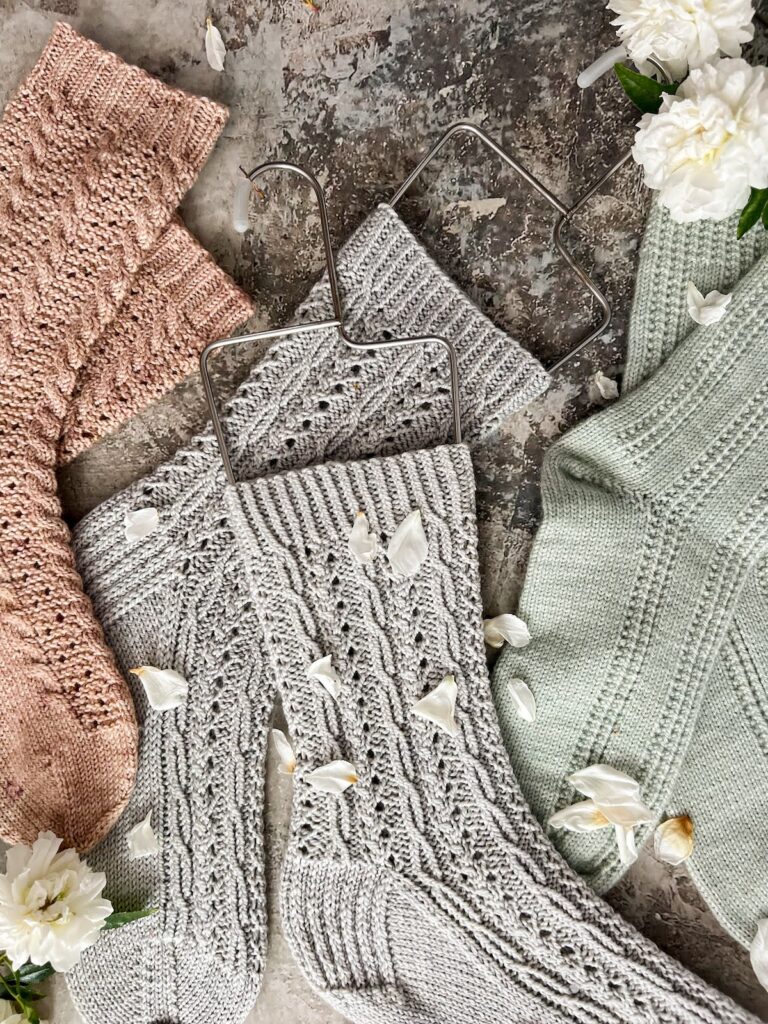
By the numbers: who is using sock blockers?
I did an informal poll of my Instagram audience because I was curious about who used sock blockers. 58% of respondents (or 113 people) said they use sock blockers. 42% of respondents (or 83 votes) said they don’t.
Now, there are a few important things to remember here that could be skewing the numbers. First, this is obviously a small sample size. Second, I design a lot of socks, so my audience is more likely to consist of committed sock knitters. Finally, I’m running the poll on social media, where people are more likely to be uploading photos of their work and therefore more conscious of blocking their socks in a way that improves the photos.
Overall, though, I thought those were interesting results, and I’m sure they represent a bit of a shift from when I first started knitting socks about 15 years ago. I’ll be curious to see if those percentages change over the next several years.
Let’s stay connected!
Join my newsletter for 30% off all new releases, regular updates with helpful tips and tricks, first crack at registration for upcoming workshops, exclusive discounts, and more.
Prefer to read without ads? Join my Patreon, which starts at just $1 a month!
Join the A Bee In The Bonnet Facebook Group to participate in knitalongs and other fun community events
Come hang out with me on the A Bee In The Bonnet TikTok
Follow along on the A Bee In The Bonnet Instagram
Get inspired via the A Bee In The Bonnet Pinterest

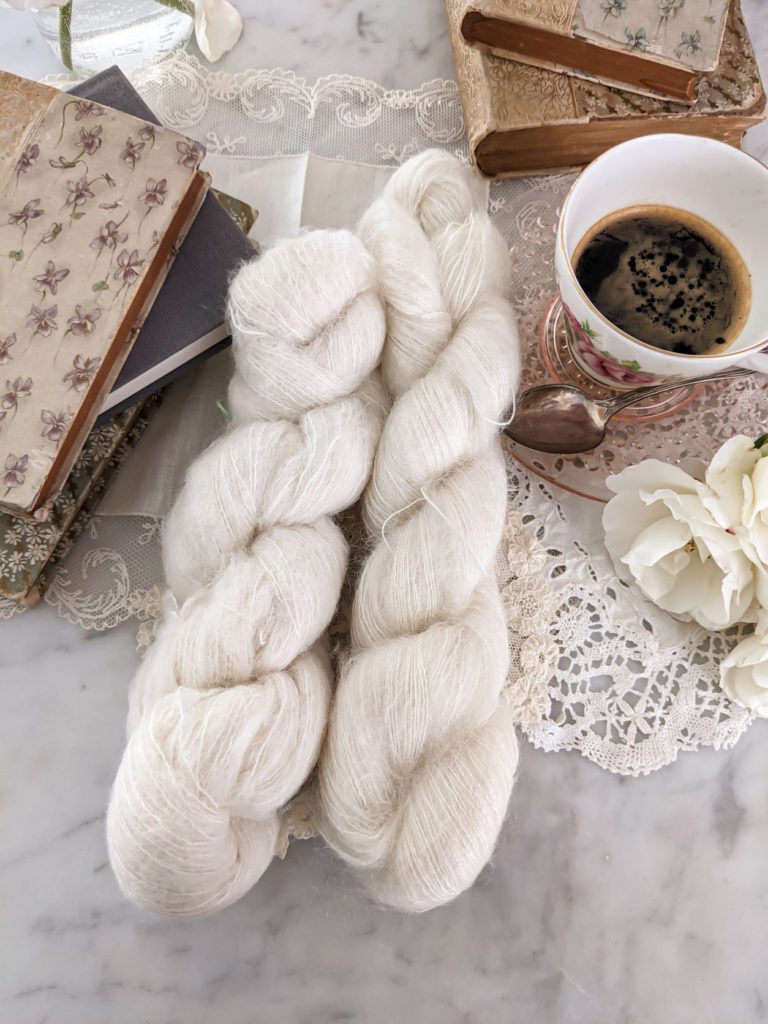
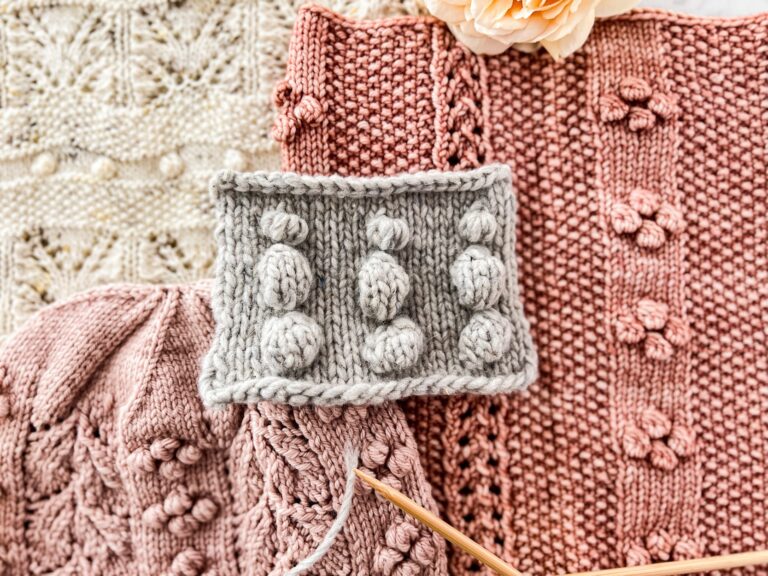
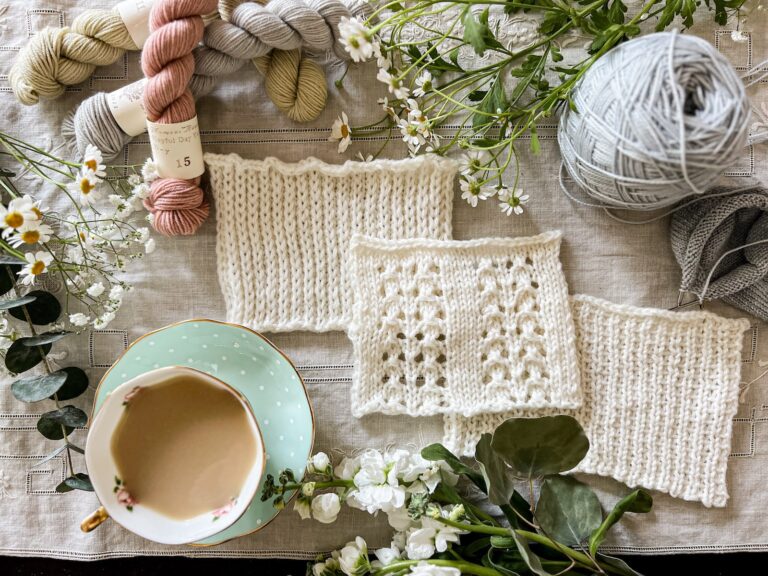

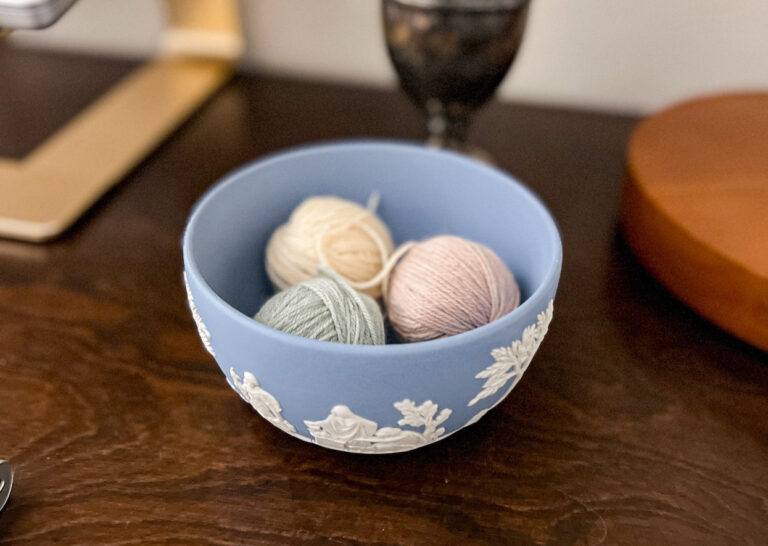
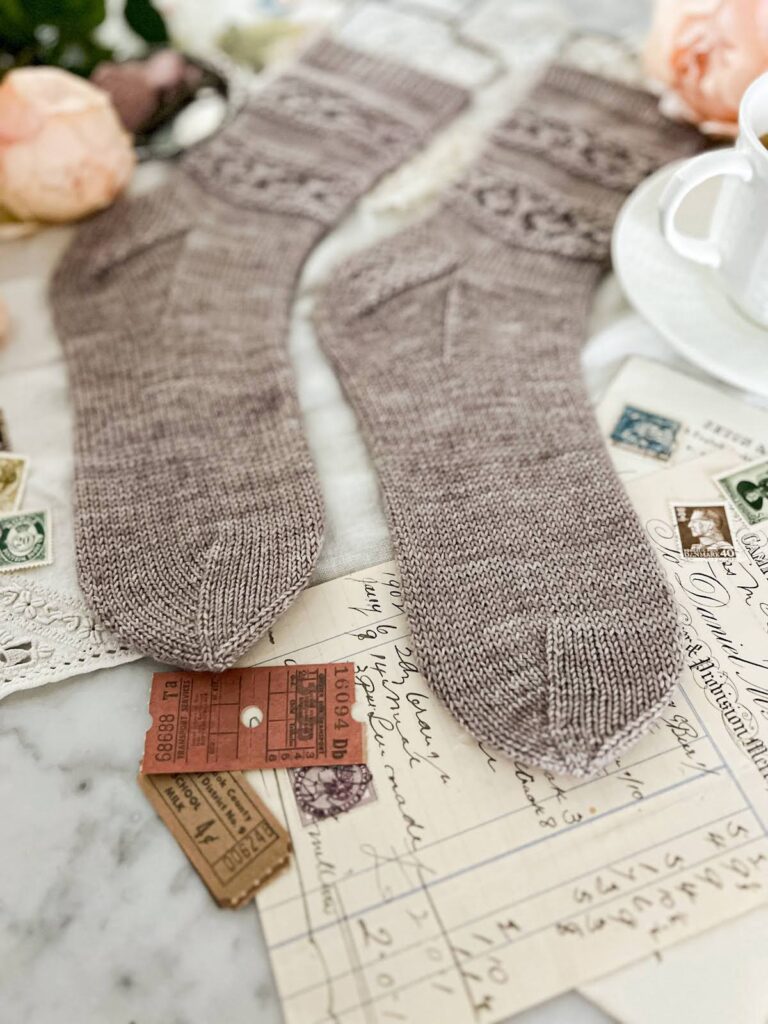
I don’t use sock blockers but my sock ruler is one of my better investments. I knit toe up exclusively and sometimes the pattern design can throw off how long (or short) the foot actually is. Therefore I hearken to the skewed adage: measure once rather than rip back and cry 🙂
Oh yes, getting that foot length just right is crucial! I have a couple pairs that are just slightly too short, and they are terribly unfun to wear.
I have recently invested in a sock ruler, but don’t own sock blockers. Using sock blockers for photographing though makes a lot of sense. Adding to my ‘need to buy’ list :):). Thanks for the informative article.
I’m so glad it was helpful for you. Sock blockers are definitely one of those things where it really helps to know yourself and your needs. For some of us, they’re super useful, and for others, they’re totally unnecessary.